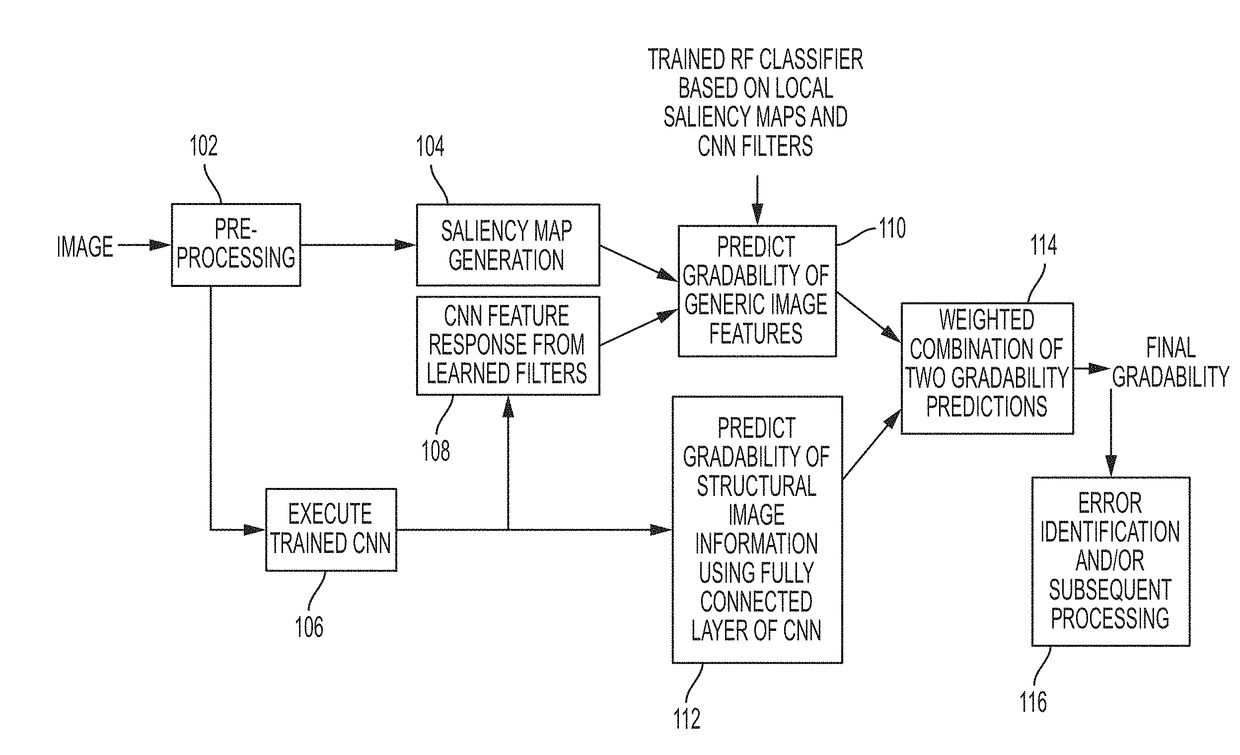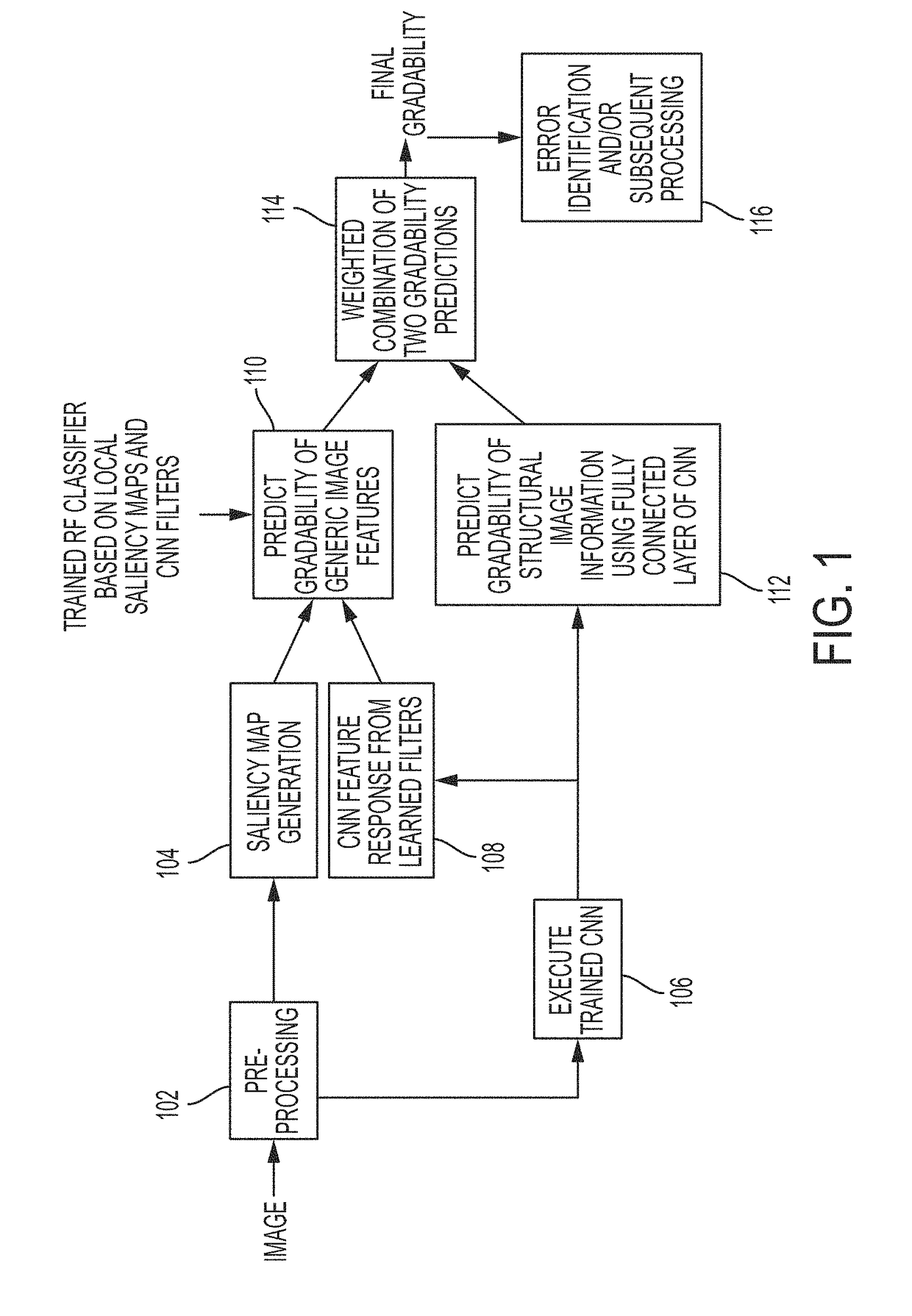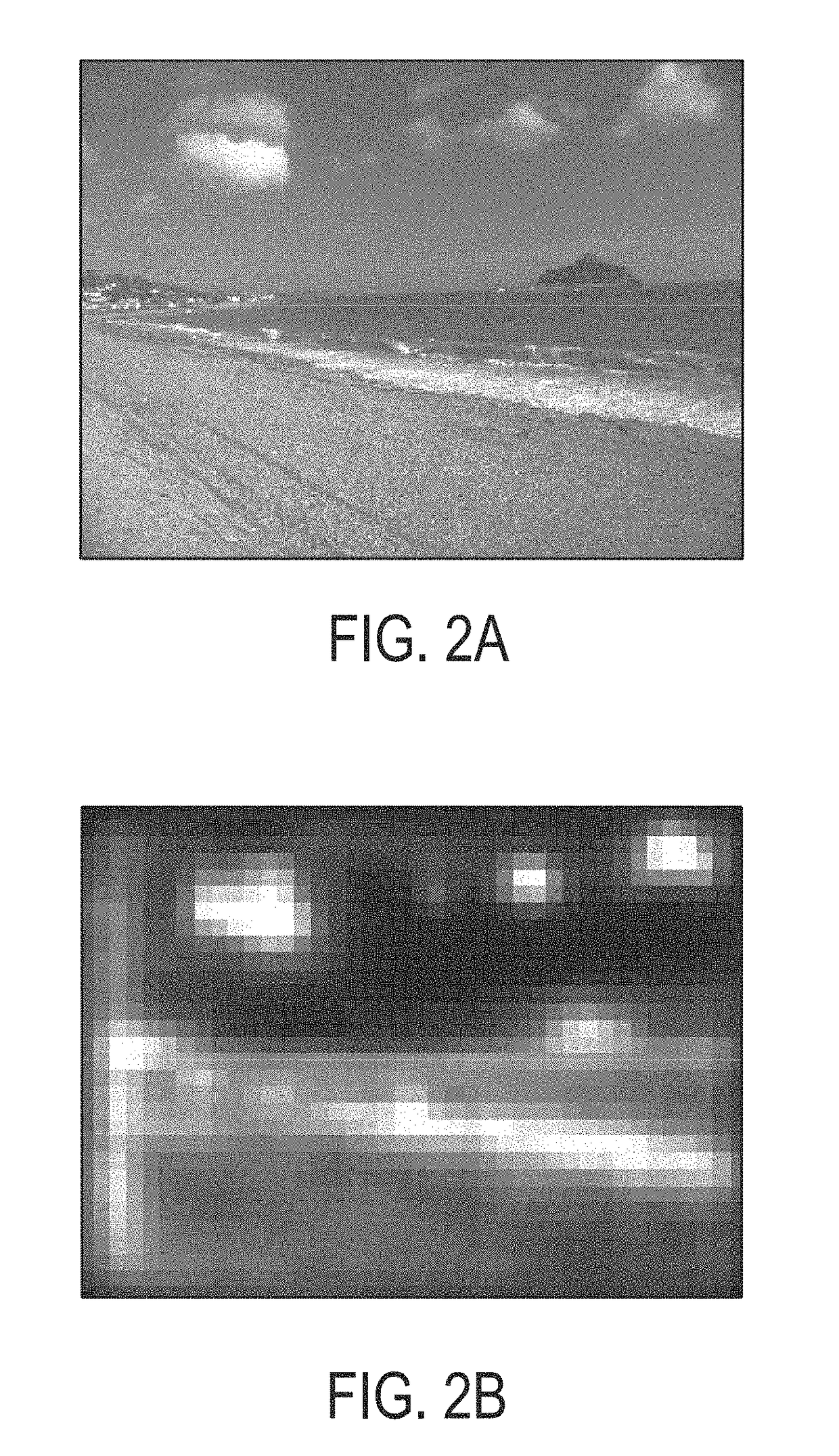Retinal image quality assessment, error identification and automatic quality correction
a retinal image and error identification technology, applied in the field of computer and computer imaging, can solve the problems of poor quality images that have to be discarded, poor generalization, and little exploration of medical image quality assessmen
- Summary
- Abstract
- Description
- Claims
- Application Information
AI Technical Summary
Benefits of technology
Problems solved by technology
Method used
Image
Examples
Embodiment Construction
[0024]A system, method and techniques may be presented that determine image quality of a machine acquired image, for example, retinal scans. The system, method and techniques in one embodiment may include combining unsupervised information from visual saliency maps and supervised information from trained convolutional neural networks (CNNs). In one embodiment, neurobiological principles behind the working of the human visual system may be employed for classifying images as gradable or ungradable. Saliency values may be computed for every pixel, for example, instead of identifying salient regions as done in conventional approaches. Multiscale saliency maps for intensity, texture and curvature features, and filtering operations allows the system and method of the present disclosure in one embodiment to capture information from local and global scales. In one embodiment, additional neurobiological information from the trained CNNs may be extracted.
[0025]In one aspect, combining the two...
PUM
 Login to View More
Login to View More Abstract
Description
Claims
Application Information
 Login to View More
Login to View More - R&D
- Intellectual Property
- Life Sciences
- Materials
- Tech Scout
- Unparalleled Data Quality
- Higher Quality Content
- 60% Fewer Hallucinations
Browse by: Latest US Patents, China's latest patents, Technical Efficacy Thesaurus, Application Domain, Technology Topic, Popular Technical Reports.
© 2025 PatSnap. All rights reserved.Legal|Privacy policy|Modern Slavery Act Transparency Statement|Sitemap|About US| Contact US: help@patsnap.com



